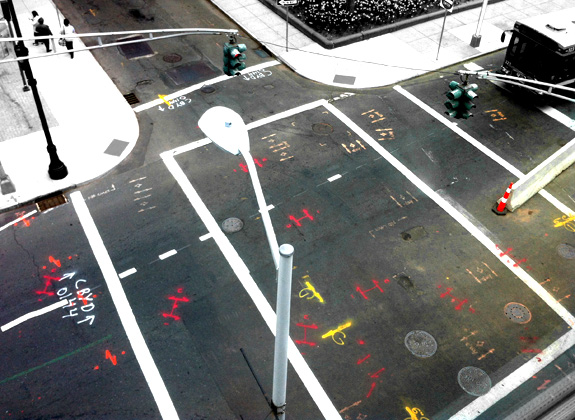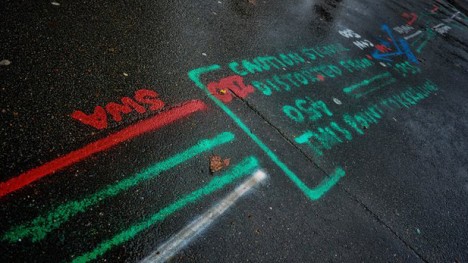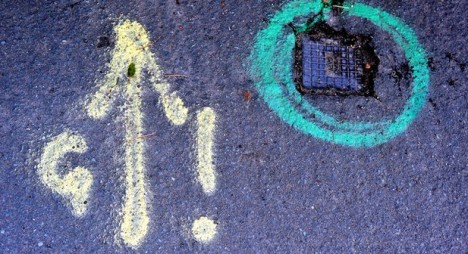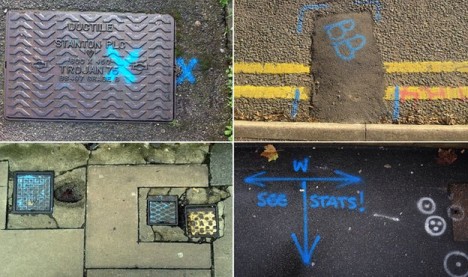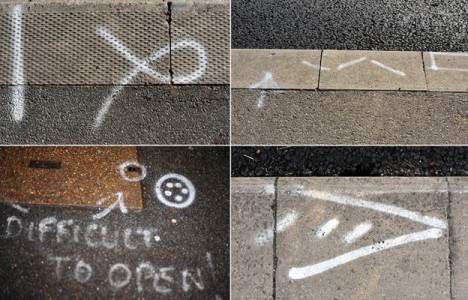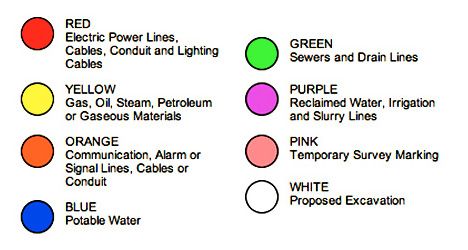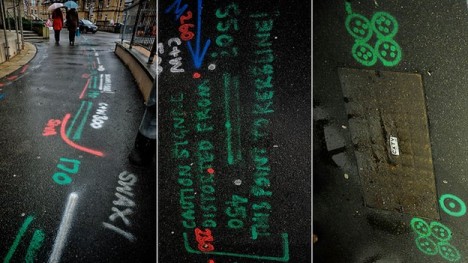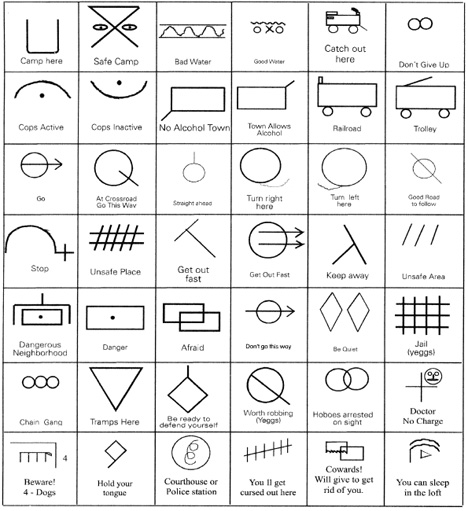Somewhere between city signs and street graffiti lies a surprisingly rich and colorful language of secret messages, all hidden in plain sight on roads and sidewalks. This spray-painted slang we walk over and drive along every day is employed by infrastructure engineers, utility companies and other city workers.
Laurence Cawley of BBC News recently explored this strange world of colorful spray-painted dots, arrows, text and more, all of which denote what lies below the surface of the city.
These markings may seem rushed and crude to the casual observer, but they are essential to the protection of underground power lines, pipes and a maze of other potential subterranean hazards, as well as to the safety of those who work around them. There are no laws governing this mysterious language, simply conventions and colloquial shorthand that have evolved over time. As Cawley aptly summarizes: “Its lexicon is numbers, lines and symbols. Its grammar is most definitely colour.”
Colors are particularly critical – at least in the UK, red means electricity, blue stands for water, yellow is tied to gas, and green is used for cables (CCTV networks, television lines and fiber optics). White, meanwhile, is a kind of all-purpose color for broader communications about road and sidewalk planning. None of these are spelled out in any official manual in the UK – they are a matter of convention, and, sometimes, contention, as not all companies use the same visual dictionary.
In the United States, however, according to Smithsonian: “These ‘safety colors’–expanded to include red, orange, yellow, green, blue, purple, brown, grey, white, and black– have been formalized by the American Standards Institute (ANSI) as Safety Color Code Z535, which provides Munsell notation and Pantone color-matching information to help ensure consistency across mediums.”
Back in the UK, numbers and arrows take on different meanings depending on color and context. Sometimes they refer to the depth of a water pipe, or the pressure in a gas line. Infinity symbols may mark the end of beginning of a planned street, while zig-zags communicate an intended pedestrian crossing. Many of these are mapped out by third-party contractors whose sole job it is to locate and tag potential hazards below. All are biodegradable and many designed intentionally to fade over time.
If you are looking for more specifics, the BBC article goes into detail about the particular meanings of various individual marks, but keep in mind: many of these may be particular to the United Kingdom, or even just specific towns and streets. There is no Oxford English Dictionary tying them all together … at least not yet. The next time you take a walk, consider taking some notes as well and see if you can decipher the local dialects of this curious language on your own city’s streets.
Recently popularized thanks to TV’s MadMen, hoboglyphs also come to mind – a semi-secret language of unobtrusive markings used by the homeless to note opportunities and hazards in urban environments. And one has to wonder: are there other hidden communications out there used by ancient orders, intelligence agencies or other groups hiding in plain sight? (Images via BBC and Smithsonian)
